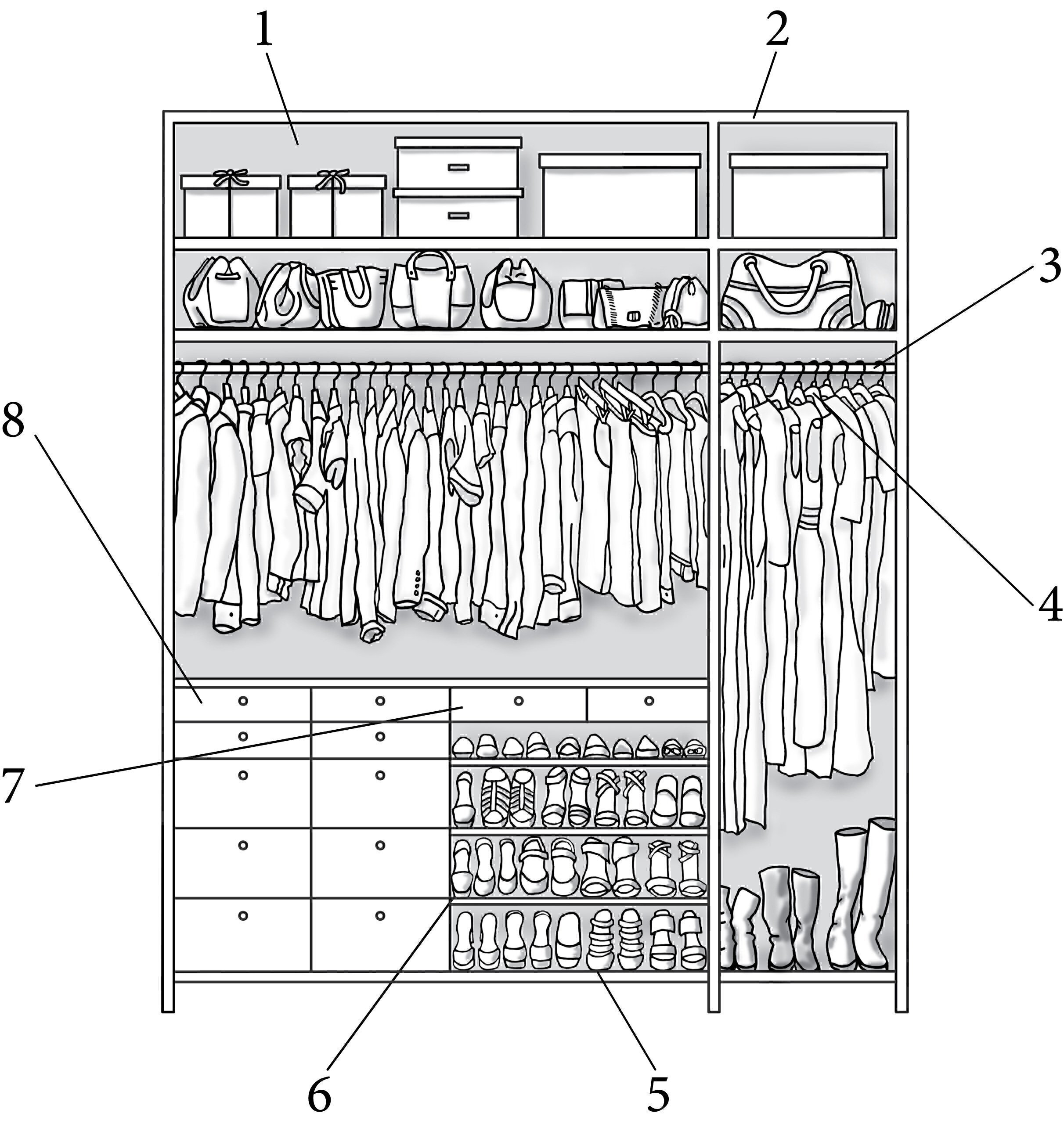Plotting Out a New Closet from Floor to Drawers
Last updated November 2022
A well-designed closet can double or at least significantly increase your storage. If you’ve got a fairly straightforward space, and simple needs, you can probably do your own planning.
Most closet-component makers and retailers provide online tools: Enter your closet’s measurements and they’ll spit out suggestions (with drawings) that you can then change—more drawers here, spaces for shoe shelves there, etc.
If you go with a custom-closet business, you’ll get a more fitted-to-your-space job. They can help configure challenging projects—an attic closet under the eaves, an open-concept setup of rods and shelves in a loft, a tiny bedroom reimagined as a dressing room.
No matter what you’re buying, start by considering how you want to use the closet. If you have a million pairs of shoes, order footwear shelving or cubbies accordingly. If it’s a his-and-hers walk-in, calculate how much space will be devoted to pants, longer-hanging coats, or dresses.

- Think vertically. Many people don’t use closet space that’s too high to reach, especially if it lacks shelves or there’s no stepladder handy. But as any skyscraper-builder will tell you, there’s value in going as tall as you can. Install shelves or rods up to the ceiling; then use those areas for out-of-season clothes or for your copious collection of Christmas ornaments.
-
Add liners to wire shelves. The marks left on your clothing by shelves in wire closet systems can be eliminated by use of plastic shelf liners. But if you’re picky about wrinkles, consider a wood system.
-
All clothing rods are not created equal. Hangers (more on this below) slide more easily on rods that are oval-shaped metal than on round wood ones. In fact, metal rods—if they’re heavy-gauge and correctly installed—beat wooden rods every time. Wood can warp, break, and can make it more difficult for hangers to slide.
-
Slim-line hangers save space. To conserve even more closet real estate, use slim-line hangers, either the flocked variety or ones in durable stainless steel. They take up less horizontal space than chunky wood or plastic models, slide more smoothly, and—if you purchase all of your hangers at once—look uniform and orderly.
-
If you need to see everything to stay organized, consider extra shelves. They can keep shoes aligned in neat rows like so many foot soldiers. They’re great for corralling sweaters or stacks of T-shirts, plus they’re cheaper than drawers and can even be custom-built by a carpenter.
-
Get adjustable, movable shelves. They’ll be more versatile when your needs change. Shelves are available both in the more expensive wood models (multiple little holes let you move shelf brackets up and down) and on wire systems supported by wall-mounted braces with lots of holes or slots into which you can add and move shelves, rods, and other components.
-
Evaluate the value of expensive add-ons. Some options—hidden safes, velvet-lined jewelry drawers—will dramatically drive up costs. But for some, these features might be worth the expense. If you have a lot of jewelry, having a way to organize it might very well be worth the $300 or more for each drawer.
-
Consider adding drawers if you're habitually untidy (or just have a lot of socks and underwear you’d like to store in the closet, not the bureau). Drawers are a lot more expensive than shelves, but they can be genius for keeping messes in check or hidden.


